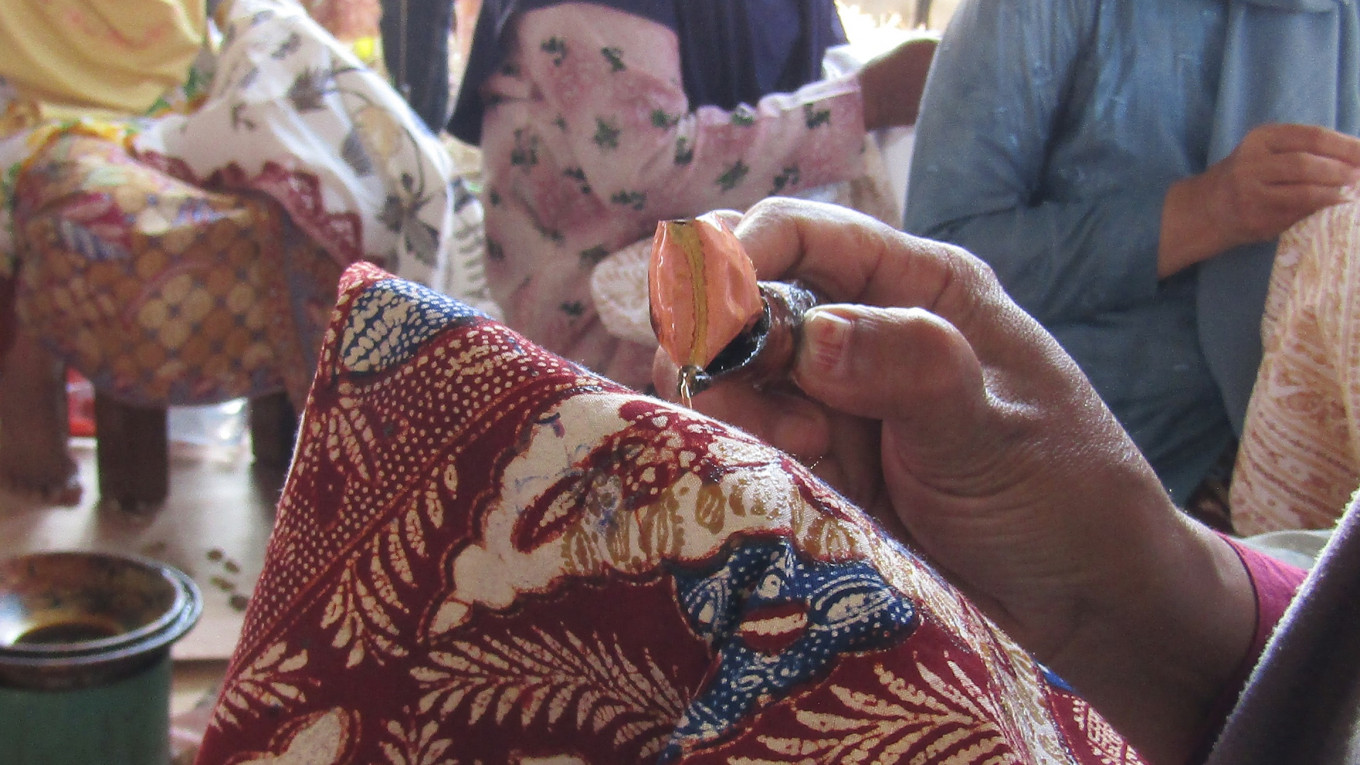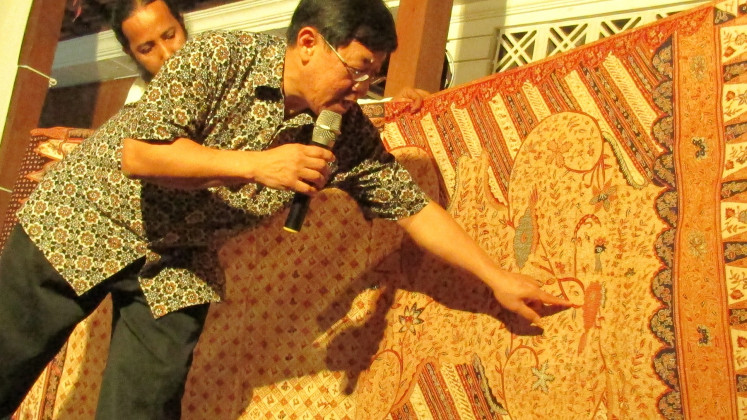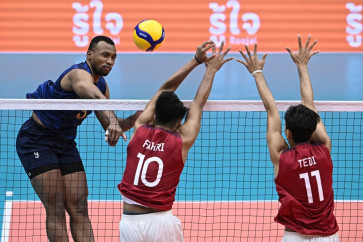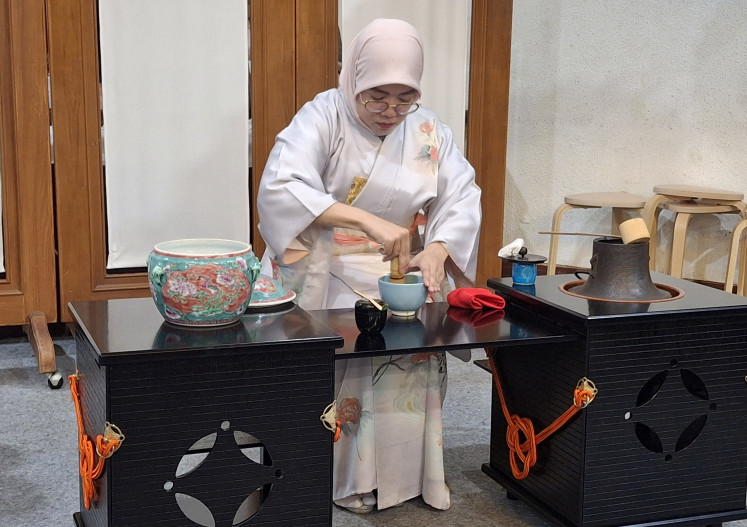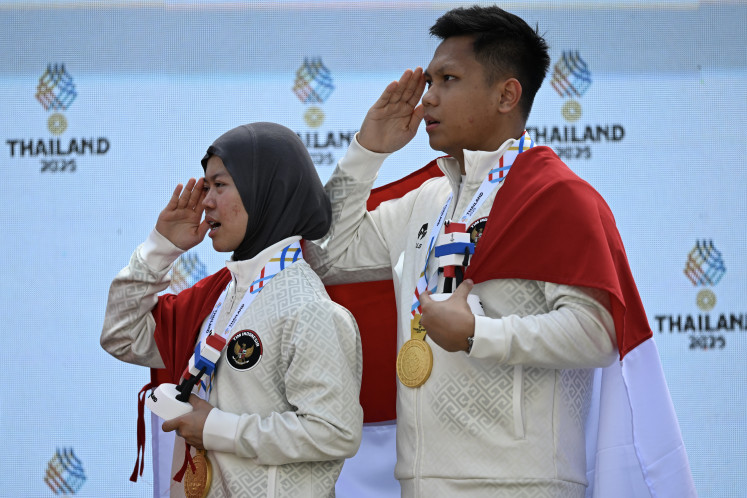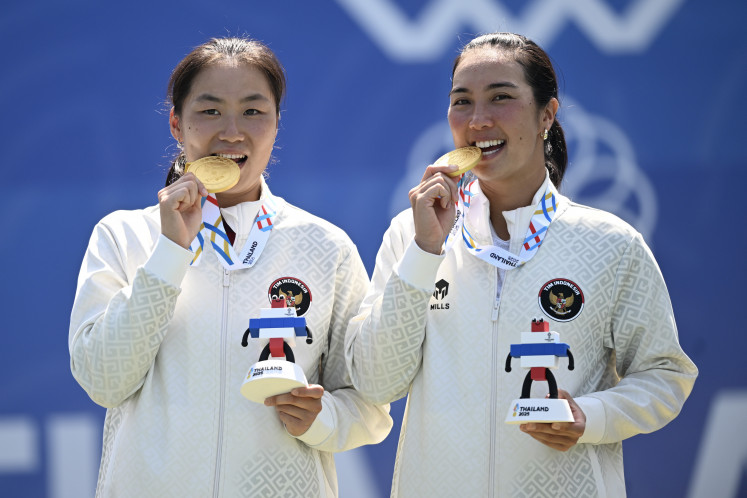Popular Reads
Top Results
Can't find what you're looking for?
View all search resultsPopular Reads
Top Results
Can't find what you're looking for?
View all search resultsRifaiyah batik: On the edge of extinction
Change text size
Gift Premium Articles
to Anyone
A
small village in Central Java remains the only hub that produces a special kind of batik that is almost on the brink of extinction.
A number of middle-aged women sit in a dry paddy field as they apply wax to cambric to produce a special kind of batik from the Batang region in central Java.
Batang’s unique batik design is popularly known as Rifaiyah and it bears the teachings of cleric and national hero Ahmad Rifai (1786-1869). Not many people are aware that this particular design has almost gone into extinction.
“I started making batik as a child, learning from my mother,” said Zaliyah, one of the women demonstrating the Rifaiyah design creation during the Rifaiyah Batik Celebration II program in Kalipucang Wetan village, Batang, from October 26 to 27, 2019.
Around 60 women are still engaged in this activity in Kalipucang Wetan, the only village that preserves this tradition.
In her modest house, Zaliyah produces batik after finishing her household chores every day.
Painting a cambric sheet with intricate motifs on both sides in bright colors characteristic of the coastal region takes three months to complete.
“I’m getting old, my batik cloth sells for Rp1.5 million [US$98.42]. When I produced finer batik in the past, the price could reach Rp3 million per piece,” said the mother of 12.
Rifaiyah batik is also worn as sarongs for males and lower garments for females.
“During wedding ceremonies, people following bridal processions used to wear Rifaiyah batik suits,” Zaliyah said.
Zaliyah attributed the drop in sales of Rifaiyah batik today partly to the current preference for wearing chemises as Muslim wear instead of batik.
Multi-function: A Rifaiyah batik cloth in the 'dapel' motif commonly used as a male sarong. (JP/Bambang Muryanto)However, as an heir to the ancestral tradition Zaliyah continues to craft batik and has handed down her talent to her second child, Dewi Fatmawati, 33, who has also learned the skill since her childhood.
The production of Rifaiyah batik, like other traditional clothing in the Indonesian archipelago, has belonged to the female domain of activity for centuries.
Ahmad Rifai, whose teachings are reflected in Rifaiyah batik motifs, was a contemporary of Prince Diponegoro.
After studying Islam in Saudi Arabia and Egypt, he set up a boarding school in his native village, Kalisalak, Batang and had many followers especially around Batang, whose descendants are now members of the Rifaiyah community.
Apart from teaching Islam, he also guided his followers to oppose Dutch colonizers. As a consequence, he was captured by colonial authorities and banished to Ambon and later moved to Manado, North Sulawesi, where he lived until the end of his life.
A researcher in Indonesian clothing and Batang heritage activist, MJA Nashir, said Rifaiyah batik making might have been initiated by Rifaiyah adherents themselves in Batang, about 7 kilometers east of Pekalongan city, known as a batik center. To date, it is unclear when the batik art emerged in Batang and there is no historical evidence to prove that Rifai either taught or ordered batik making.
“If he did teach batik making, it constituted an ulema order that should have been observed by Rifaiyah devotees in Batang, but in reality, batik makers are only found in Kalipucang Wetan, as well as a small number in Kedungwuni,” he added.
Nashir in his article, “Batik Rifaiyah, Nafas Spiritual yang menyejarah” (Rifaiyah Batik, the Spiritual Inspiration that Makes History) in Tabloid Bhinneka, June 2016, mentions 24 motifs identified as Rifai’s teachings about life.
For instance, the motif of pelo ati (gizzard and liver), drawn in the form of a peacock with its head separated from the body that still retains its liver while leaving its gizzard outside, is a teaching of Sufism telling humans to maintain virtue symbolized by the liver and discard all foul matter represented in the bird’s gizzard.
Meanwhile, batik observer Kwan “William Kwan” Hwie Liong said Islamic influence was very strong on batik in Batang, such as the Rifaiyah version. One of its designs is the absence of whole pictures of animals because of the prohibition on drawing living creatures.
In the detail: Batik expert Kwan “William Kwan” Hwie Liong explains the 'pelo ati' (gizzard and liver) motif on a Rifaiyah batik sheet. (JP/Bambang Muryanto)“If there’s any animal motif, its head and body are separated and the motif is disguised,” William said.
Javanese philologist Manu J. Widyaseputra said that in the 19th century the regent in Semarang, Raden Suryakusuma, and district head assistant of Magetan, Joyosubrata, wrote a book, Repen Ripangi, about the life of Ahmad Rifai.
Repen means lyrics of Javanese traditional macapat (sung poetry) and Ripangi is the Javanese pronunciation of Rifai.
“It’s an important source of the history of Ahmad Rifai and his batik,” he said.
In an article entitled “Literature as a source for history, The case of Repen Ripangi (1886)” in Wacana, October 2008, published by the University of Indonesia, Willem Van Der Molen, a researcher from the Royal Netherlands Institute of Southeast Asia and Caribbean Studies (KITVL), explains that Repen Ripangi is about Rifai and his Islamic reform teachings, then seen as controversial. It is recounted that Rifai was invited to a debate with Pekalongan regional chief Haji Pinang in the Pekalongan regent’s office.
Rifai was declared the loser and asked not to further spread his teachings.
In 1859, the Dutch arrested and expelled Rifai to Ambon for endangering peace on Java Island. Despite Rifai’s demise about 150 years ago, his reform spirit lives on among Rifaiyah supporters around Batang and other cities, who still study his doctrine called Tarajumah, and women in Kalipucang Wetan and a few others in Kedungwuni continue to celebrate it through Rifaiyah batik making.
As a member of the younger generation, Dewi Fatmawati makes batik in her spare time while working with the National Handicraft Council (Dekranasda) of Batang. She feels happy because she can freely channel her artistic expressions in this activity.
“When I craft batik, I always remember Kyai Rifai’s teachings,” she said.

